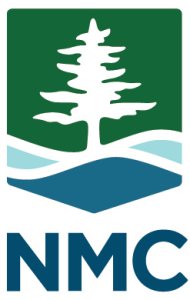The purpose of the Perceptual Learning Method/Module or PLM is to introduce and reinforce concepts, ideas, or meaning without detailed explanation –or “any” explanation for that matter. The aim is to SHOW learners a concept, idea, or meaning and allow them to experience, see, and learn what IT is.
Largely inspired by Chapter Nine of How We Learn by Benedict Carey and backed by research and trials in my courses, PLMs are a way of “learning without thinking” according to Carey. By rapidly working thru a series of images, learners receive feedback with every image they encounter. After approximately 50 minutes, significant perceptual learning will have occurred. What makes this different from flash cards is that rather than a one-to-one association, PLMs have a one-to-many association.
For example, in a PLM for surgical technology, rather than simply connecting an image of a scalpel to the correct answer “scalpel”, the PLM might include images of every conceivable type of scalpel, as well as scalpels in various contexts (during surgery, on a tray with other tools, etc.). These images would cycle through the module randomly and the learner would be required to correctly associate them to the correct answer of “scalpel” each time. All the while, random images of forceps, sponges, clamps, etc. would be cycling through the module and must also be associated with correct answers. Imagine the applications for Biology, Geography, Automotive Technology, Physics, Nursing, Chemistry, Foreign Language, various forms of corporate learning–any form of learning with a highly visual content.
While built for use at Northwestern Michigan College, our new “PLM generator” could have application in any type of training which requires that learners visually identify items. It is probable that any literate age group with dexterity enough to make selections on a computer keyboard would stand to benefit from this tool. Learning to generate PLMs is appropriate and accessible to all audience levels–beginner through expert.
In How We Learn, Carey describes his own learning experience using a PLM to identify various schools of artistic painting styles (without prior knowledge) and achieving 80% accuracy. He also detailed a case in which fledgling ground school students used a PLM to simulate zero visibility flight (night or fog) as indicated by various indicator dials. These ground school students then performed as well as experienced pilots with 1,000 hours of flight time. In both cases, Carey and the ground school students each invested only 50 minutes. Carey expresses his opinion at the end of the chapter that perceptual learning will radically impact education. After reading the Chapter One I was inclined to agree and scheduled a meeting with Mark DeLonge.
We began looking for a system or tool that could do exactly what we wanted while remaining true to Carey’s observations. We had no luck. In late 2014 we approached Jeff Straw, who created a prototype using HTML and Javascript files. We built several PLMs using the following process: I would select the pictures (geography in this case) to be used in the PLMs. Mark and other staff from NMC’s Educational Media Technology department would then add arrows or other indicators to show which part of the image I wanted to identify. The images were added, the code adjusted, the files packaged together, and put into Moodle as an “object.” This process required several NMC personnel and several weeks to create a single PLM.
We realized that this wasn’t sustainable and that we needed a PLM creation tool (PLM Generator) if we were going to do our part to “radically impact education.” Ideally, we would create a system with which a single user could create a high-quality PLM in a matter of hours. By this point, Jeff Straw had retired and John Velis became involved by giving his Computer Information Technology capstone project course the option to tackle our project. They agreed and built what we believe to be the world’s first and only* PLM Generator in Spring semester 2016.
The system was rather “buggy” and several of the students chose to spend the summer of 2016 on an internship to continue working on the project. At the end of summer, the internship ended though one of our interns continued through fall of 2016. A new intern finished “cleaning up” during Spring of 2017. The “cleaning up” process was quite extensive and involved sorting and correcting a good deal of troublesome coding. The final project contains its own image editor, source attribution for images, a leader board and several other bells and whistles. One user can now build a high quality PLM in hours rather than weeks.
In addition to building my own PLM’s, I’ve made PLM building into an Honors Project for my students (anything less gets a pretty poor product in my experience) and hope to see some pretty solid student-generated PLMs soon. We’d like to see this system blow up NMC’s server as a result of the demand for PLMs. To build your own PLM’s go to the site at http://plmlearning.org/ and register yourself as a user, then request permission to build. While you’re in the site, play the module in Social Sciences called “European Minors” it is the only complete PLM at this time. Once complete, send Mark or myself an e-mail so that we’ll know to go in and approve your request.**
*–So far as we can tell.
**–This is a beta-testing environment and may require patience at times.


What kind of projects have been used with this PLM so far?
So far there have been PLMs built for Surgical Technology, ESL, History, Geography, EKG interpretation, and Art History. Feel free to go in and build in other disciplines as well.